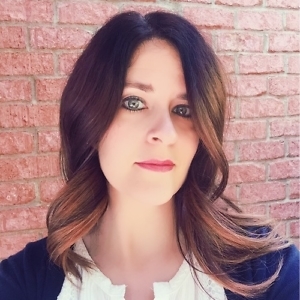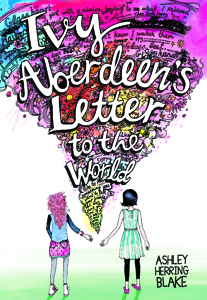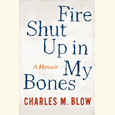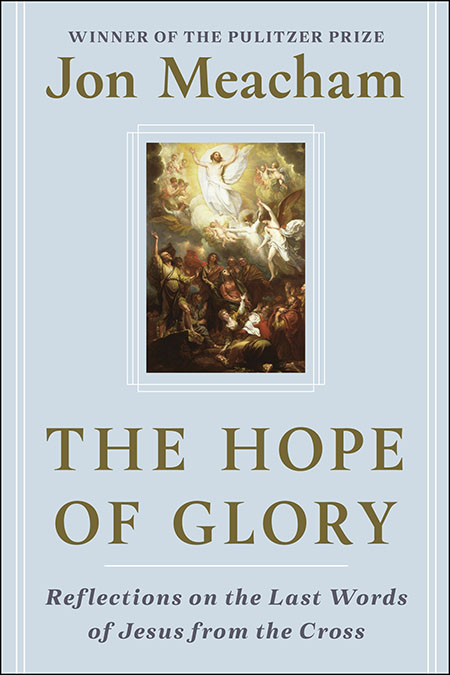Life, Love, and Emily Dickinson
In Ashley Herring Blake’s Ivy Aberdeen’s Letter to the World, a young girl considers her own identity
“A storm was coming, which was perfect,” thinks Ivy Aberdeen, the resilient protagonist of Ashley Herring Blake’s new middle-grade novel, Ivy Aberdeen’s Letter to the World. Ivy is up before dawn, drawing in her notebook, “a portable, papery hope chest” that contains pictures of the things Ivy loves most—her family, her house, her world. But this storm doesn’t sound like the thunderstorms Ivy normally loves—this storm sounds like a train.
 Ivy’s father bursts into her attic room in a panic, grabbing Ivy, who grabs her notebook, to run for the storm cellar. Ivy and her sister, Layla, argue as they stumble out the door into windy, swirling darkness. Ivy’s mother falls, still holding one of her newborn twins, whose birth has completely changed the family’s close-knit dynamic. Ivy’s father curses, which he never does, as he desperately tries to help his family to safety. By the time he pulls the cellar door shut, Ivy has twisted her ankle, everyone is soaked and covered in dirt, and Ivy just wants to crawl into her mother’s lap. Unfortunately, her mother’s lap is “pretty full with Ivy’s baby brother.”
Ivy’s father bursts into her attic room in a panic, grabbing Ivy, who grabs her notebook, to run for the storm cellar. Ivy and her sister, Layla, argue as they stumble out the door into windy, swirling darkness. Ivy’s mother falls, still holding one of her newborn twins, whose birth has completely changed the family’s close-knit dynamic. Ivy’s father curses, which he never does, as he desperately tries to help his family to safety. By the time he pulls the cellar door shut, Ivy has twisted her ankle, everyone is soaked and covered in dirt, and Ivy just wants to crawl into her mother’s lap. Unfortunately, her mother’s lap is “pretty full with Ivy’s baby brother.”
When the Aberdeens finally resurface, their home is gone. “Gone is not a word Ivy thought she would ever use to describe a house,” writes Blake, “A person, maybe. Summer vacation. The last of the chocolate cake. But not a house. And certainly not her house.” Left with only Ivy’s notebook and the clothes on their backs, the Aberdeens seek temporary housing in the high-school gymnasium.
Ivy, who can’t sleep, wanders off to the school library, where she sees a poster of Emily Dickinson. As she contemplates Dickinson’s lines, “This is my letter to the world /That never wrote to me,” Ivy realizes she’s not alone. June, the quirky, health-food-obsessed daughter of her mother’s doctor, appears from behind one of the stacks. The two girls spend a long time drawing, and Ivy feels a thunderstorm brewing in her stomach.
Even before the storm, some of Ivy’s drawings feel like “a storm in her stomach” because they depict Ivy herself holding hands with a mysterious girl. As her friends talk more and more about their crushes, Ivy, who thinks of herself as “Uncrushable Ivy,” senses that these pictures hold the secret to what makes her feel different. She wonders how to sort out her feelings if “everything she saw and read about and heard about was all boy-girl, girl-boy?”
 Not even ten years ago, voices in children’s literature were about as diverse as the literary canon of the 1950s. Teachers were desperate for books with more complex themes featuring non-traditional family structures. In a time before literary juggernauts like Gary Paulsen, Laurie Halse Anderson, and Sandra Cisneros, it was impossible to imagine that children’s books could cover issues of gender and sexuality.
Not even ten years ago, voices in children’s literature were about as diverse as the literary canon of the 1950s. Teachers were desperate for books with more complex themes featuring non-traditional family structures. In a time before literary juggernauts like Gary Paulsen, Laurie Halse Anderson, and Sandra Cisneros, it was impossible to imagine that children’s books could cover issues of gender and sexuality.
Ashley Herring Blake offers middle-grade readers a protagonist who is struggling not just with sexual identity but with change—the change from childhood to being a teen, the change from having a home to losing it. Although this subject might be too mature for the bottom end of the middle-grade range, Blake offers an opportunity for readers to encounter queerness in a context in which they can ask questions.
Two of the story’s main characters are lesbians: Robin, the owner of the only bed and breakfast in town, and GiGi, Layla’s best friend. Robin generously offers a deeply discounted rate for Ivy’s family. She also offers Ivy a safe respite from the family’s crowded quarters, sharing lunch with her and letting the girl ask questions about her partner. Robin’s advice during one of these conversation is a noticeable theme throughout the novel: “If a person was questioning all this stuff, that person doesn’t have to know all the answers,” she tells Ivy. “It’s okay to wonder. To be curious. And it’s okay to be sure too.”
One of the most harrowing parts of Ivy Aberdeen’s Letter to the World is when Ivy’s prized notebook goes missing and her most personal pictures, the ones she’s not ready to talk about yet, begin appearing in her locker with notes encouraging her to “talk to someone about it.” Ivy begins a quest to find the keeper of the notebook, in the process embarking on her own quest for self-discovery.
Wondering what happens in the end? You’re in good company. “Wondering was what life was all about,” Ivy believes. “Wondering was how you found yourself.”

Sarah Carter is a high-school English teacher living and working in Lebanon, Tennessee. She is currently an M.F.A. candidate at the Sewanee School of Letters.


